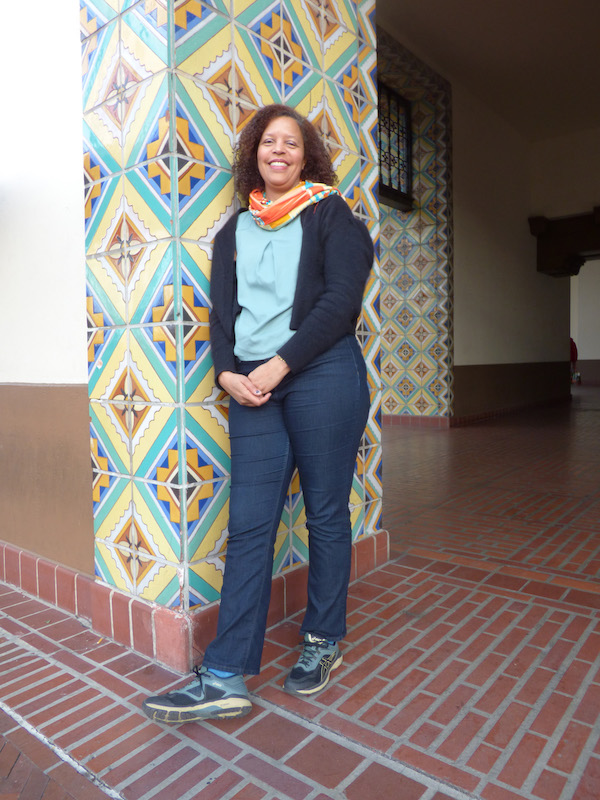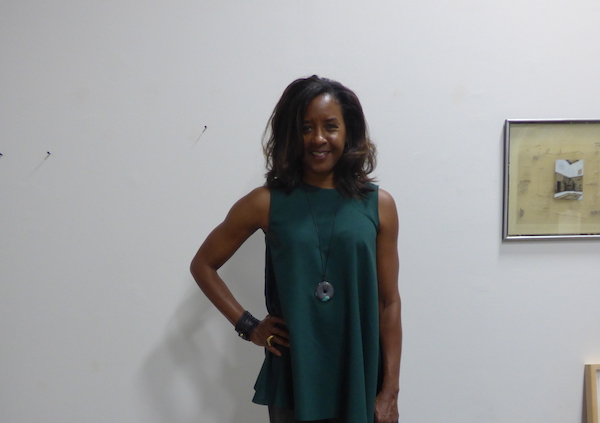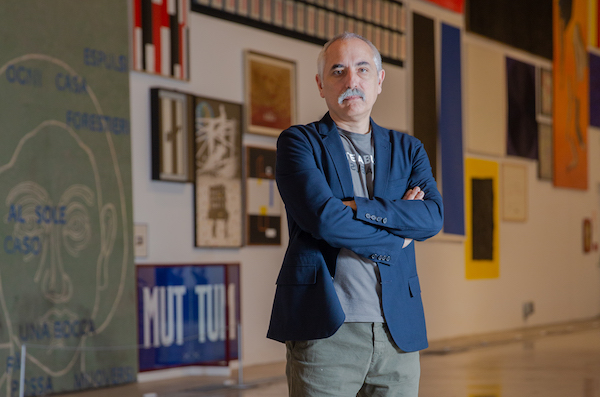Your cart is currently empty!
Byline: interviewed by John David O’Brien
-

Interview with Isabelle Lutterodt
Isabelle Lutterodt is the director of the Los Angeles Municipal Art Gallery.
O’BRIEN: I know you started your activities as an artist but are now involved in administration and curation as the director of the Barnsdall Municipal Art Gallery. How did your life take this direction?
LUTTERODT: After I finished my studies at CalArts in 2001, I curated the “Ghetto Fabulous” exhibition with Karin Pleasant that was shown at the Watts Towers Arts Center and The Armory in Pasadena. That started me on a trajectory of doing independently curated exhibitions in LA. I went back to school and got a masters degree in museum studies, then worked my way up from the usual starting positions. I was the exhibition coordinator at UCSD for a few years but—then fast-forwarding—what really catalyzed my interest in this practice was an exhibition that I curated at CAAM (the California African American Museum) titled “Through the Gates: Brown vs. Board of Education.” There I could really see how community and arts could come together and delve into a particular idea, a particular concept, a particular way of working.
Do you fundamentally view the kind of work you’re doing now as an extension of your art practice?
I definitely felt that way when I was working at Angels Gate Cultural Center in San Pedro. The idea was to create a level playing field where artists of different extractions could be working side-by-side and be seen in a single show. Now it has morphed into something else where I’m not really curating or making art but bringing these things into a broader field. I’m directing a larger staff where we’re responding to what it means to live in a community like Los Angeles. It means that we have to look at all the different stories. I believe that we are really curious about how we tell these multiple stories while being open to experimentation.
You come from multiple cultures—being born in England, then brought up in Ghana, then coming through the East Coast when you were a child, then after Howard University (DC) to Los Angeles. How does that influence the way that you work and how you understand culture making?
I know that my experience is shaped by being an immigrant. LA is a city of immigrants with numerous people who, other than their country of origin, have the largest populations right here. I grew up with the certain binary understanding of what happens in your home, growing up in a Ghanaian culture with certain things that are important there but not elsewhere. It shapes how you understand things. It led me to understand that everyone has a different story and wants these different stories to be heard.
When you think about your next and upcoming goals, is there something specific that you’d like to accomplish?
Yes I’d really like to work on projects that have something to do with formerly incarcerated youth, and figure out a way in which the city can be a place they can feel like they’re a part of. I don’t know how to do it yet but I’d like to imagine creating a way in which formerly incarcerated youth can have a face in public. Especially when I think about galleries like Barnsdall, I ask how can we position ourselves as a place of equity and justice, and what does that look like? There’s a lot of talk in the museum world about social justice and change. What would that look like and how can we bring that in?
-

RECONNOITER
Felicia Filer is the Public Art Division Director at the City of Los Angeles Department of Cultural Affairs. DCA is committed to the creation and maintenance of art in the Public Works Improvements Arts Program, the Private Arts Development Fee Program, the Citywide Mural Program, and the City’s Art Collection.
Could you please talk about how you came to be involved in contemporary art in LA?
After getting my MBA at Claremont, I knew that I did not want to go back into the financial services industry. I didn’t want to be involved in a consumer-based industry. I wanted to do something more meaningful and I saw an article in the LA Times about the Norton Family Foundation and how they were beginning to collect art by African-American artists. I wrote to them to get involved which didn’t work out but I ended up getting involved with Arts Inc, where I felt like I could meld my interest in business and in the arts, but what really catalyzed my involvement was an auction that I went to at LACE where I saw this extremely wide gamut of different types of artwork by all these different types of people. That was the real start for me.
You are involved in a myriad of activities ranging in territory and types of projects. Are there any things that you are particularly excited about at this moment?
I suppose if I had to pick one to plug I might talk about Current:LA Food. This upcoming triennial opens on October 5th. It is a temporary public art project and deals with the issue of food, so artists are being asked to use that theme as a prompt. Because of the ephemeral nature of the project and the thematic base, I’m particularly excited about this event. The way the artists involved take on the topic is becoming much more performative than object-oriented. It opens the doors for considering arts in public spaces with very different types of materials and in ways that are not just about being objects or more stable types of constructions that end up somehow responding to the place or the architecture. It also establishes a different type of precedent for that which is considered art in the public sphere.
Are there any other topics that you’d be interested in talking about with regard to Los Angeles?
There are things happening in neighborhoods and places all around LA… I want to be careful not to say that there’s some great big central pivot around which everything moves. So just because the art world doesn’t follow it the same way it does these large institutions doesn’t mean that these places and these events don’t exist. The other thing that I also think about is the sad reality that Los Angeles is still racially segregated and how that plays out in the work that is being exhibited. Different groups have to set up exhibition spaces just for their work and that is a drag. It creates a kind of self-reiterating isolation.
-

Reconnoiter
Giorgio de Finis is currently the artistic director of MACRO (Museum of Contemporary Art Rome) where he has organized the sprawling MACRO Asilo project. He has opened up this institution to a citywide influx of creative energies, involving hundreds of artists, musicians, filmmakers and other creatives who intersect with the visual arts over the course of a year.
It seems to me that as a man of culture working within the visual arts that you always find yourself in a place where there is a turning point or at least there is a fulcrum. How do you see your role in this transformation of the way we can perceive the value of contemporary art in our lives?
I am an anthropologist, so I come to art with a vision that is different from those from this tradition. I see art in its anthropological role or within the realm of the human. My role right now is to create means through which mechanisms can start up that allow the creation and presentation of art. All this without judging in advance what is high or low, what will be historical, etc. My role is to make openings, create spaces where artists can do their work. In addition, I don’t believe in creating fortresses with flags and banners to declare that we are the most important thing around.Along with MACRO Asilo, if a visitor came to Rome today and did not want to focus on antiquity but on contemporary art, what would you recommend them to do or go see?
Obviously they should come to the MACRO—especially if they are interested in experimentation. Besides, many things are going on here including exhibitions, conferences, films, music and it’s entirely free. In addition I would suggest going to the MAAM (Metropoliz Museum of the Other and the Elsewhere), a museum—not a museum—where you can imagine another way of experiencing an art collection (http://www.disponibile.org/progetti/69-maam). Also, The National Art Gallery—Galleria Nazionale d’Arte Moderna e Contemporanea (http://lagallerianazionale.com/en/) where they have mixed the collection in an extremely controversial way, no longer referring to the chronology but organizing it more like a rebus that the visitor must try to solve, without the traditional modes used by museums. And then I would recommend going to see a bit of street art. This is everywhere, between walls in San Basilio (http://onthewalls.it/) or in Tor Marancia (http://www.999contemporary.com/big-city-life-tormarancia-a-short-film- about-the-project), all around the Grande Raccordo Anulare (ring road surrounding the city), in short, it is a city where you find these interventions all around town.How do you think that art and above all how do you think artists can support themselves within a system of income that we have today in the art world?
The market has only and always represented a small part of what happens in the world of art. Artists must necessarily find other systems to live than the art market. I would say that I do not have an answer to your question but I would say that artists have to resist AND must continue to work. Only then can the ways to get that work to the world be found.


